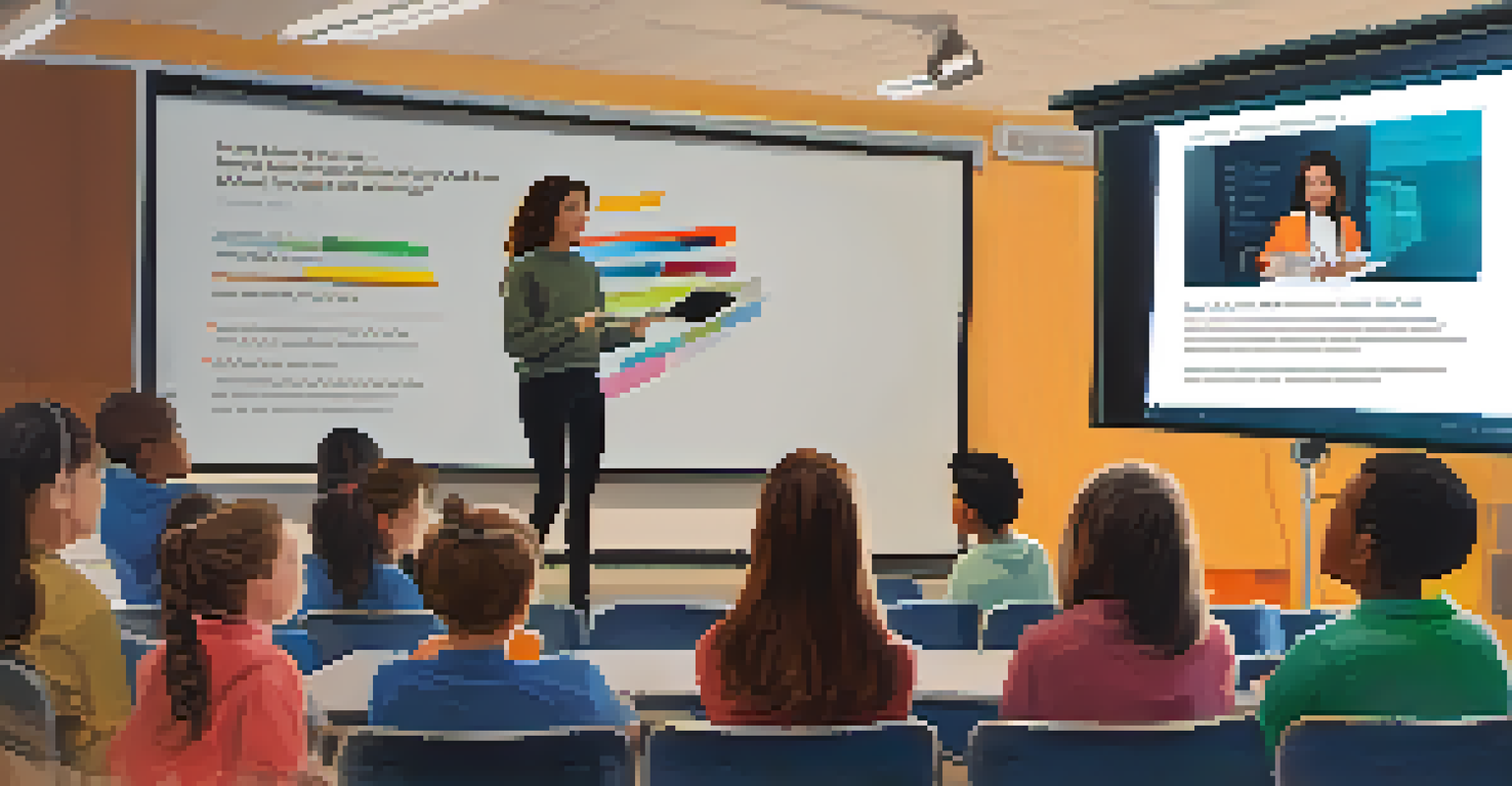Digital Storytelling: A Collaborative Tool for Creative Learning

Understanding Digital Storytelling and Its Importance
Digital storytelling combines traditional storytelling with digital media. It allows individuals to share their narratives using videos, podcasts, and interactive content. This approach not only engages audiences but also fosters creativity and critical thinking skills.
Storytelling is the most powerful way to put ideas into the world today.
In an educational context, digital storytelling serves as a powerful tool for students to express their ideas and learn collaboratively. It encourages them to think beyond written words, tapping into visuals, audio, and technology. This multifaceted approach enriches the learning experience, making it more memorable.
Moreover, digital storytelling cultivates a sense of community among learners. As students collaborate on projects, they share their unique perspectives, leading to richer narratives. This shared experience can enhance teamwork skills that are essential in both academic and professional settings.
The Role of Collaboration in Digital Storytelling
Collaboration is at the heart of digital storytelling, transforming solitary projects into group endeavors. When students work together, they not only share the workload but also contribute diverse viewpoints. This pooling of ideas can lead to more innovative and compelling stories.

For instance, a group project might involve researching a historical event, where each member takes on a different aspect. One student could focus on visuals, another on writing, while a third handles the technical side. This division of labor allows for a deeper exploration of the topic and enhances the overall quality of the final product.
Digital Storytelling Enhances Learning
By combining traditional storytelling with digital media, students can express their ideas creatively and collaboratively.
Additionally, collaboration fosters communication skills. As students discuss their ideas and provide feedback, they learn how to articulate their thoughts clearly and respectfully. These skills are invaluable, as effective communication is crucial in any collaborative effort, whether in school or the workplace.
Tools for Digital Storytelling Collaboration
There are numerous digital tools available to facilitate collaborative storytelling. Platforms like Google Docs allow multiple users to work on a document simultaneously, making it easy to brainstorm and edit in real time. Other tools, such as WeVideo or Adobe Spark, enable groups to create videos together, blending their individual contributions seamlessly.
The best stories are those that are shared; they create a connection between the storyteller and the audience.
Additionally, social media can play a role in digital storytelling. Platforms like Instagram or TikTok can be used not only to share stories but also to gather feedback from wider audiences. This interactivity can enhance the storytelling process, as creators receive immediate responses to their work.
These collaborative tools not only simplify the storytelling process but also make it more enjoyable. When working together, students often feel more invested in the project, leading to a greater sense of ownership and pride in their work.
Enhancing Creativity Through Digital Storytelling
Digital storytelling sparks creativity by encouraging students to think outside the box. Rather than sticking to traditional forms of expression, they can experiment with various media and formats. This freedom can lead to more engaging and original stories that truly reflect their unique voices.
For example, a student might choose to create a podcast to tell a personal story, integrating music and sound effects to enhance the narrative. Another might opt for a photo essay, using visuals to convey emotions and messages. These creative choices empower students to explore their interests and talents.
Collaboration Boosts Story Quality
Working together allows students to share diverse viewpoints, leading to more innovative and engaging narratives.
Moreover, the creative process itself can foster a growth mindset. As students encounter challenges while telling their stories, they learn to adapt and troubleshoot. This resilience is a valuable life skill that extends beyond the realm of storytelling.
Engaging Diverse Audiences with Digital Storytelling
One of the most powerful aspects of digital storytelling is its ability to engage diverse audiences. By using various media, storytellers can reach people from different backgrounds and with varied interests. This inclusivity makes storytelling a universal language, breaking down barriers.
For instance, students can share their stories with not only their classmates but also family members or even the wider community. This expanded audience can provide valuable feedback and encouragement, further motivating students to refine their skills.
Additionally, engaging diverse audiences fosters empathy. As students learn about others' experiences through storytelling, they develop a deeper understanding of different perspectives. This empathy is essential in today’s interconnected world, promoting respect and collaboration across cultures.
The Challenges of Digital Storytelling Collaboration
While digital storytelling offers numerous benefits, it’s not without its challenges. Coordinating schedules among team members can be tricky, especially in a school setting where everyone has different commitments. This can lead to frustration and uneven contributions, affecting the overall project.
Moreover, technical difficulties can arise when using digital tools. Not all students may be familiar with the software or platforms, leading to a learning curve that can slow progress. It’s important for educators to provide guidance and support to ensure everyone is on the same page.
Future Trends in Digital Storytelling
As technology evolves, immersive storytelling tools like virtual reality are set to transform educational experiences.
Lastly, differing opinions can sometimes lead to conflicts within a group. It’s essential for students to learn how to navigate these disagreements constructively. Teaching them conflict resolution strategies can help foster a positive collaborative environment.
The Future of Digital Storytelling in Education
As technology continues to evolve, so does the landscape of digital storytelling in education. With the rise of virtual and augmented reality, new possibilities for immersive storytelling are on the horizon. These advancements could further enrich the creative learning experience for students.
Additionally, the increasing integration of digital storytelling into curricula reflects its growing importance. Educators are recognizing its value in enhancing engagement and fostering essential skills, such as collaboration and creativity. This trend is likely to continue, making digital storytelling a staple in classrooms worldwide.

Ultimately, the future of digital storytelling in education is bright. By embracing these innovative practices, educators can create more dynamic and inclusive learning environments that prepare students for the complexities of the modern world.